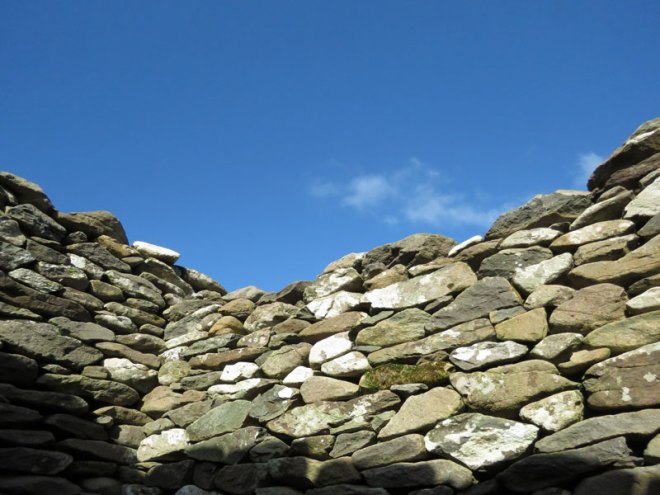
not sure if the 2,000 BC date is accurate
~ other sources suggest the 12th century
Sunday happened to be Imbolc, Groundhog Day, Candlemas or Brigid’s Day, about halfway between the winter solstice and the spring equinox. It marks the beginning of spring, which I now see comes a lot sooner in Ireland than it does in New England. Our first stop was at these fascinating beehive huts.



the 2-minute walk up the mountain path



looking back down at the sea behind us


Also known as the Fahan Beehive Huts, Caher Conor (Cathair na gConchuireach) is located on the south side of Mount Eagle west of Dingle. The complex consists of five structures.
The clochan (beehive huts) in Caher Conor were probably single family dwellings and were attached to each other with a doorway leading from one to the other. They were built in the form of a circle of successive strata of stone, each stratum lying a little closer to the center than the one beneath and so on up to a small aperture at the top that could be closed with a single small flagstone or capstone. No mortar was used in building, which is called corbelling.
The hillside at one time had over 400 of these drystone, corbelled huts surviving, prompting one antiquarian in the 19th century to refer to the area as the “City of Fahan”. Dating the huts is difficult because the skill of corbelling has been used in Newgrange (3100 B.C.) and as recently as the 1950s. The huts at Fahan along the Slea Head Drive may well date to the 12th Century when the incoming Normans forced the Irish off the good land and out to the periphery of the Dingle Peninsula.
~ Saints & Stones website







orbs ~ I found the one with the bright center very interesting

~ notice the pink plastic spoon in her hand ~
it was with her most of the day
















and the tiny parking lot

view looking down from the parking lot ~ yikes!
It was good to get warmed up in the car and drive off for our next destination.